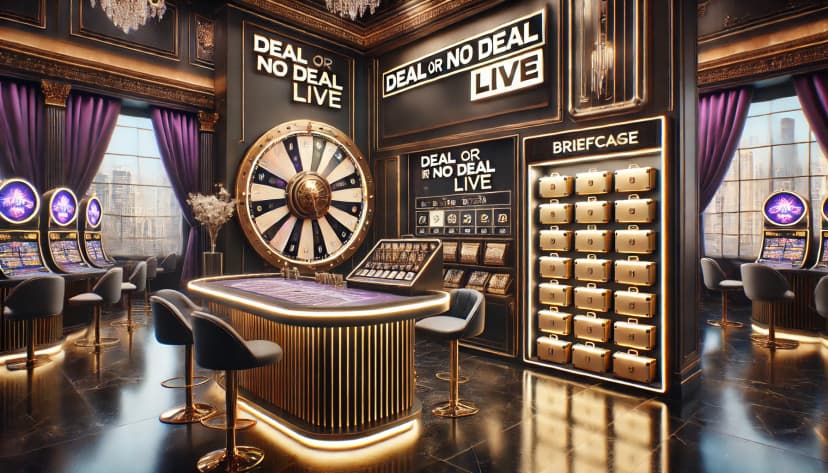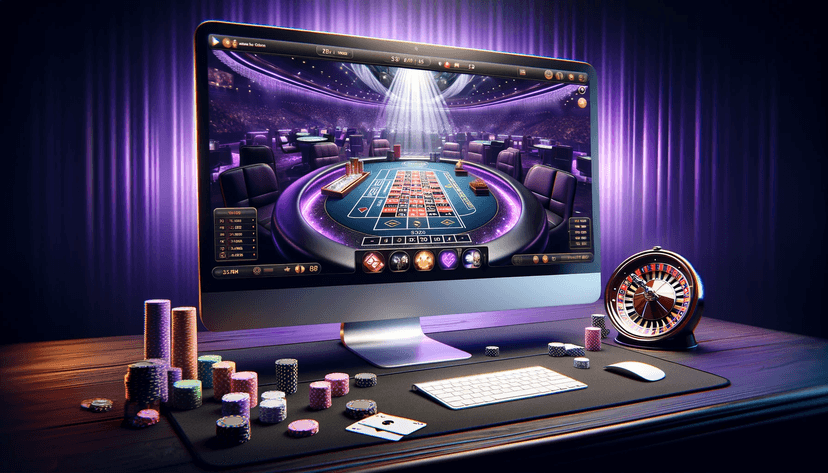How Live Dealer Games Became So Popular

Live dealer games are probably one of the most popular gambling activities today. However, how did we come to this point? How did live dealer games become so popular? If you want to learn more about the popularity of live games and how they became mainstream, you are in the right place. Here is our take on the growth of live casino games in Zimbabwe.
How Did Live Gaming in Zimbabwe All Start?
Live dealer games first appeared in online casinos around the early 2000s. Back then, these games were pretty basic – not nearly as immersive or engaging as the slick experiences we enjoy in Zimbabwe today.
During the early 2000s, the internet was just starting to take off. People were exploring new online wonders on their computers. As internet tech gained speed, more Zimbabweans began playing live games.
The first online live game is believed to have been offered by Island Casino, which went live in 2003. At that time, live blackjack, baccarat, and roulette were available, developed by Visionary iGaming, a popular software provider.
Why Have Live Dealer Games Become So Popular in Zimbabwe?
Here are some of the main reasons why live dealer games are a big hit at top live casinos across the nation.
Better Streaming Technology
A key feature of live dealer games is the live stream of a real croupier. Back when these games were first emerging globally, streaming tech wasn't up to par. Low-quality streams just didn't offer that immersive feel many players in Zimbabwe now expect.
We've come a heck of a long way with streaming! These days, almost anyone can broadcast live. All it takes is a decent smartphone and an average internet connection. This leap in streaming tech means online casinos can now deliver much more engaging and realistic live games to players in Zimbabwe.
High-Speed Internet Availability
Just like streaming, internet technology has also zoomed forward. The internet has become much more accessible throughout Zimbabwe, with more people getting online than ever before.
Access to the internet allowed online casinos to target a much larger audience. In this way, the accessibility of the internet contributed to the popularity of live dealer games.
Advancements in Mobile Technology & Personal Computers
There are two main things that you need to play some online live casino games.
- The first thing is a decent internet connection, which we have already covered in the previous section.
- The second thing you need is a device to play casino games on. This can be your personal computer or your mobile phone.
Mobile phones and personal computers have become more accessible over the years. Now, it is almost impossible to find a person who doesn't own a smartphone. You likely have access to either a personal computer or a smartphone. In other words, you have access to live dealer games.
Improvements in Online Safety & Security
One of the main reasons why people still shy away from making any online transactions is safety and security. Back when the internet first started to gain traction, there were a lot of scams and ransomware attacks happening online. At that time, internet security wasn't that advanced, and people did not feel very comfortable participating in activities like casino live games.
Internet security has also made a lot of improvements over the years. Even the simple Windows Defender has become so advanced that it protects you from almost all kinds of viruses, malware, and ransomware. This improved internet security and safety helped in building trust in people. It made them much more comfortable in adopting new online activities.
The Snowball Effect & Market Competition
Until now, we have mentioned improvements in internet accessibility, internet security, streaming technology, and mobile technology. All those things helped create an environment that allows almost all online platforms to succeed. They created an insanely large market with millions of potential customers, and online casinos quickly realized this.
As more people started using the internet, more people started getting into casino games. This demand caused hundreds of online casinos to pop up and provide them. It created competition, which caused those online platforms to provide much better features, including bonuses.
Why Do People Like Live Dealer Games
You might be wondering why don't people simply go to regular land-based casinos and enjoy the same games over there? There are several reasons for that.
Convenience
The main reason everyone enjoys online casino live games so much is convenience. With a regular land-based casino, you must get up, drive to the casino or maybe take public transport. You also have to go back home. However, you don't have to do any of that with online live dealer games.
The COVID-19 lockdowns caused a massive boost in the popularity of online activities. Because of those lockdowns, people couldn't go to regular land-based casinos. As they tried live casino games and experienced the convenience, they kept playing and didn't switch back even after the lockdowns ended.
Interaction
The interactive nature of live dealer casinos significantly enhances the gaming experience. Players can communicate directly with professional dealers, adding a social element that's often missed in traditional online gaming. This interaction isn't just limited to the dealers; players can also chat with each other, fostering a sense of community and camaraderie.
Another benefit is the wide variety of games available. From classic favorites like blackjack and roulette to newer, innovative games, live dealer casinos are continually expanding their offerings. These games are accessible at any time, eliminating the need for travel and opening up a world of casino gaming to those who may not have easy access to a physical casino. For players looking for a realistic, engaging, and convenient way to gamble, live casinos are an excellent choice.
Personalization
Another reason why live dealer games are so popular is because of the personalization that they offer. These games feel much more personal to the user. When you play a live casino game, you don't have to worry about other players. You feel as if all the attention is given to you, which most people like. You don't have to worry about what you are wearing, how you are playing the game, if you are winning or losing, or anything else.
Conclusion
Live dealer games have come a long way. It all started in the early 2000s when live-streaming technology was not as advanced as it is today. Over the years, with the advancement of the internet, mobile technology, and live-streaming technology, we have now come to the point that online live games with a dealer have started to provide an incredibly immersive experience.
FAQ
How Do Live Dealer Games Differ from Standard Online Casino Games?
Live dealer games offer a real-time gaming experience with actual dealers, similar to playing in a physical casino. Unlike regular online games that use RNGs (Random Number Generators), live games provide more transparency and allow for social interaction with the dealer and other players.
How Has Technology Influenced the Rise of Live Dealer Games in Zimbabwe?
Improvements in streaming technology and internet speeds have made live dealer games more accessible and reliable for players in Zimbabwe. High-quality video streams enable players to interact with dealers and the game in real-time, enhancing the overall gaming experience.
Why Do Players in Zimbabwe Often Choose Live Dealer Games Over Traditional Online Games?
Many players in Zimbabwe prefer live dealer games because they offer a more interactive and immersive experience. The ability to chat with live dealers and other players creates a more engaging and authentic casino atmosphere.
How Important Is Social Interaction in Live Dealer Games?
Social interaction is a crucial aspect of live dealer games. Players can communicate with both the dealers and fellow players, fostering a more social and enjoyable gaming environment compared to standard online games.
How Do Live Dealer Games Guarantee Fair Play?
Live dealer games ensure fairness by using actual cards, roulette wheels, and other casino equipment that are visible in real-time via live stream. This level of transparency gives players confidence in the game's integrity.
Have Live Dealer Games Contributed to the Expansion of Online Casinos in Zimbabwe?
Yes, live dealer games have significantly boosted the growth of online casinos in Zimbabwe by attracting players who desire a more authentic casino experience. This has led to increased player engagement and higher revenues for online casino operators.
What Kinds of Games Are Typically Available in Live Dealer Format?
Popular live dealer games include classics such as blackjack, roulette, baccarat, and poker. Many online casinos also feature game show-style games, providing a diverse range of live dealer gaming options.











